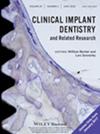Finite Element Analysis of Novaloc Attachments at Extreme Angulations and Arch Forms: A Specification Study
Abstract
Statement of Problem
Due to its biomechanical advantages, the Novaloc attachment system with angulated abutments has gained popularity in two-implant-supported mandibular overdentures. However, limited data are available on how implant position, angulation, and arch form affect stress and strain distribution within the attachment system. Understanding these factors is essential for optimizing prosthetic longevity and clinical outcomes.
Purpose
This finite element analysis (FEA) study aimed to evaluate the impact of implant position, angulation, and mandibular arch form on stress and strain distribution in Novaloc overdenture attachment systems.
Materials and Methods
A computed tomography (CT) scan of an edentulous mandible was segmented using 3D Slicer software, and three mandibular arch forms (ovoid, tapered, square) were modeled in a three-dimensional FEA environment (ANSYS Workbench, ANSYS Inc.). Implants and the Novaloc attachment system were designed and integrated using ANSYS SpaceClaim software. Finite element models were generated with implant angulations of 0°, 15°, 40°, and 60°, positioned at three locations: lateral incisor region, midpoint between lateral incisor and canine, and canine region. Vertical and oblique loads were applied in the first molar region to simulate masticatory forces. Von Mises stress distribution and dislocation forces were recorded and analyzed.
Results
The highest stresses were observed in canine-positioned implants within tapered arches under 30° oblique loading. Stresses in Novaloc abutments (36.85–40.27 MPa) and inserts (13.89–15.31 MPa) approached their mechanical limits. Increasing implant angulation up to a total of 60° between implants increased stresses on the abutments while reducing stresses and displacement in the inserts. Oblique forces (30°) generated higher stresses compared to vertical and 45° oblique forces. Among mandibular arch forms, stress distribution followed the pattern: tapered > ovoid > square.
Conclusions
Anterior implant positioning in two-implant-supported overdentures resulted in more favorable stress distribution within the Novaloc attachment system. Implant angulations up to 60° had a minimal effect on stress patterns, suggesting that angulated abutments may be a viable alternative in cases with anatomical limitations. These findings provide biomechanical insights that may aid in optimizing implant placement and attachment selection in clinical practice.

 求助内容:
求助内容: 应助结果提醒方式:
应助结果提醒方式:


